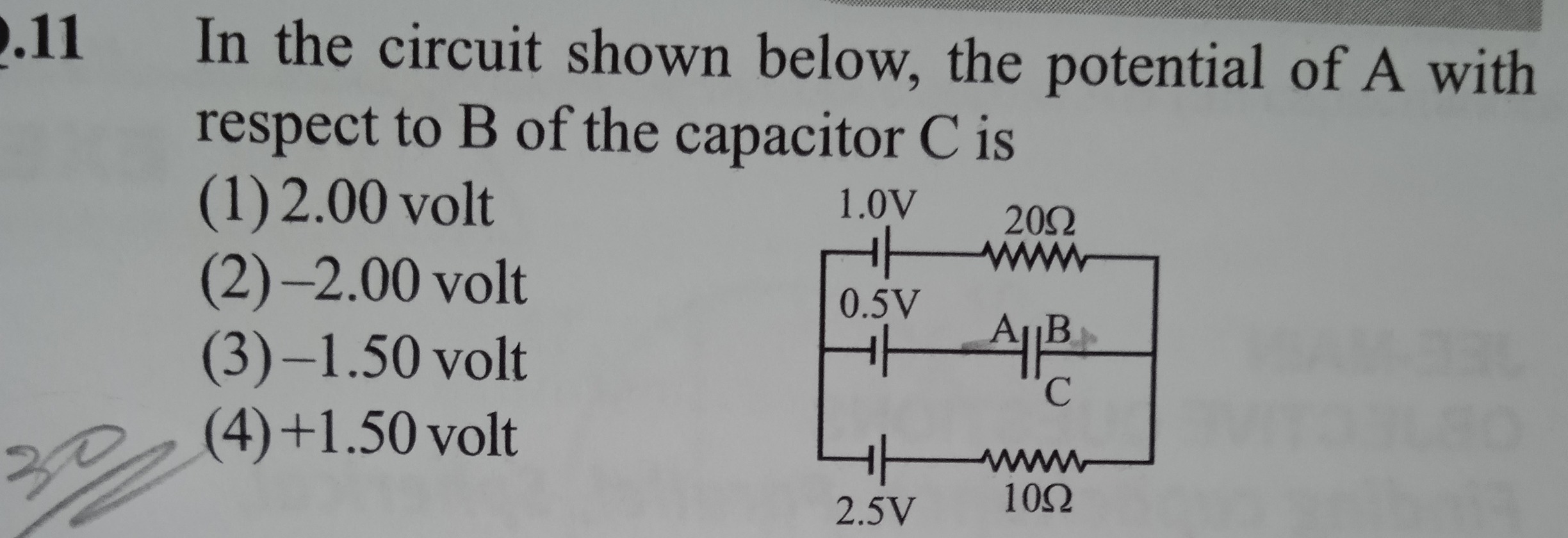Question
Question: In the circuit shown below, the potential of A with respect to B of the capacitor C is ...
In the circuit shown below, the potential of A with respect to B of the capacitor C is

2.00 volt
-2.00 volt
-1.50 volt
+1.50 volt
+1.50 volt
Solution
To find the potential difference VA−VB across the capacitor C in steady state, we first need to determine the current flowing in the main circuit loop. In steady state, no current flows through the capacitor branch, as a capacitor acts as an open circuit.
Let's analyze the main loop consisting of the three batteries and two resistors. We will apply Kirchhoff's Voltage Law (KVL). Let's assume a clockwise current I.
To match the options, we assume the 1.0V battery's polarity is effectively reversed from its drawing (i.e., it opposes the direction of potential increase from the 2.5V battery).
- Sum of EMFs: Enet=2.5V−0.5V+1.0V=3.0V.
- Total resistance: Rtotal=20Ω+10Ω=30Ω.
- Current I=RtotalEnet=30Ω3.0V=0.1A.
Let's set the potential of the bottom wire (connected to the negative terminal of the 2.5V battery and the bottom of the 10Ω resistor) as 0V.
- Potential at A (VA): VA=0V+2.5V=2.5V.
- Potential at B (VB): VB=I×10Ω=0.1A×10Ω=1.0V.
VA−VB=2.5V−1.0V=1.5V.
